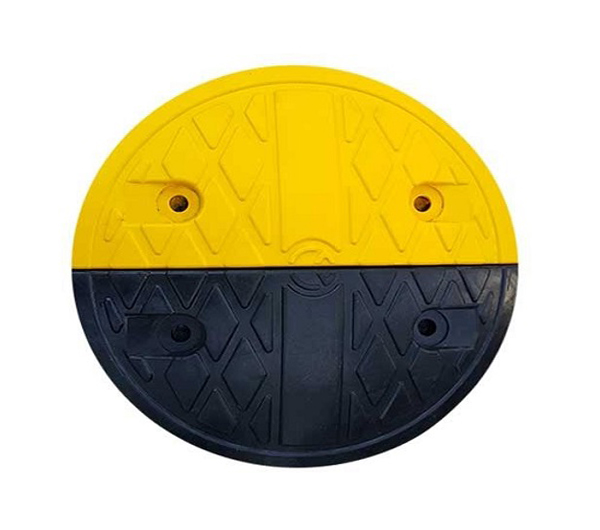Regulating Traffic With Speed Bumps
Most drivers and pedestrians have encountered one or more types of Speed Bumps. As it relates to traffic and parking lot management, there are some types, each with its own purpose.
Street speed bumps, known as traffic calming features are designed to cause drivers to slow down significantly to go over them safely. Raised roadway surfaces are bumps on the road that typically range in height between three and four inches, and are placed across the whole roadway with space on either side for drainage. The depth of the bumps is typically less than one foot. Located in traffic calming zones, the bumps remind drivers to watch their speed and make it impossible to drive too fast through these areas.
A speed bump on a street or in a parking lot made of high-impact material, such as concrete or asphalt, is typically larger and more noticeable. They can have stripes or the entire surface painted in embedded reflective tape or highly visible paint colors, such as yellow or orange.
Traffic calming devices are used in residential areas to reduce the rate at which a motor vehicle travels in high traffic areas or areas that have had problems with racing or other traffic-related problems. These bumps are typically smaller in size and are made of lower impact materials, such as recycled plastic or rubber. Additionally, they can be painted orange or yellow or embedded with reflective tape to improve visibility at night or in the daytime.
The purpose of speed humps is the same as that of Speed Ramps, but they are designed to be driven over at speeds up to twenty miles per hour without stopping or slowing down. This type of traffic calming feature is wider than the typical bump in that they are typically ten to fourteen feet in-depth. Unlike the smaller traffic calming devices, which are intended to make drives stop abruptly, speed humps are designed to encourage a gradual stop and to remind drivers to maintain the speed limit. Speed bumps vary depending on the traffic situation and parking situation, but they are primarily used in residential areas.
Raised road poorly designed road features can be difficult to negotiate even if vehicles have a low clearance. These traffic calming devices can also pose a hazard to motorcycles, bicyclists, and even pedestrians if not visibly marked. In some cases, the speed bump will be designed so that a break in the bump in the middle of the road allows two-wheel vehicles to pass without having to pass over the bump.
Controlling vehicle speed with a speed bump or speed hump is the best way to make your parking lot, your driveway, or your private lane safer. High visibility speed bumps and signs are the best way to communicate to drivers to keep their speed to a minimum.




Comments
Post a Comment